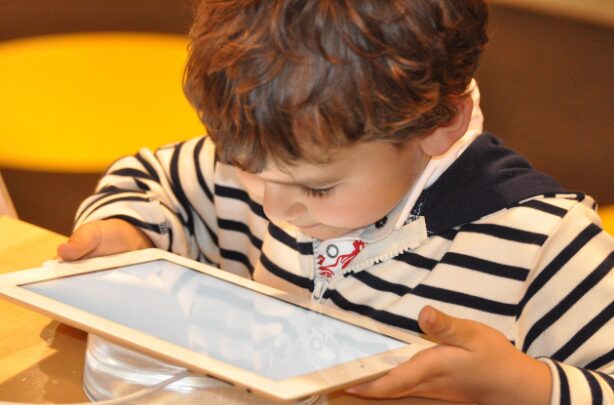Choosing the right tablet for your child can feel overwhelming in today’s digital landscape. With countless options available and growing concerns about screen time, parents need reliable guidance to make informed decisions that support their child’s development while ensuring safety and educational value.
This comprehensive guide examines every critical factor in selecting kids’ tablet PCs, from developmental considerations to technical specifications, helping you navigate the complex market with confidence.
Understanding Your Child’s Developmental Needs
Age-Specific Considerations for Tablet Selection
Ages 3-5: Early Explorers
- Motor Skills: Require larger icons, simplified interfaces, and responsive touch screens
- Cognitive Development: Benefit from interactive, cause-and-effect applications
- Attention Span: Need frequent content rotation and shorter activity sessions
- Safety Priority: Maximum parental control with curated content libraries
Ages 6-8: Learning Foundations
- Academic Support: Tablets should complement reading, math, and science curricula
- Creative Expression: Drawing, music, and storytelling applications become important
- Social Skills: Controlled introduction to communication features
- Independence: Gradual increase in device autonomy with maintained oversight
Ages 9-12: Digital Natives
- Research Capabilities: Access to educational websites and reference materials
- Productivity Tools: Introduction to word processing and presentation software
- Coding Introduction: Programming apps and logical thinking games
- Responsible Usage: Advanced parental controls with increased self-regulation
Essential Safety Features and Parental Controls
Comprehensive Content Filtering
Modern kids’ tablets must provide multi-layered content protection:
Web Filtering Systems
- Real-time website blocking based on age-appropriate categories
- Custom whitelist/blacklist capabilities for personalized control
- Time-based access restrictions for different content types
- Safe search enforcement across all browsers and applications
App Management Controls
- Age-verification requirements for app downloads
- In-app purchase blocking and approval systems
- Usage time limits for individual applications
- Content rating enforcement aligned with family values
Screen Time Management Tools
Research indicates that excessive screen time can negatively impact children’s cognitive, linguistic, and social-emotional development. Effective tablets should include:
Daily Usage Limits
- Customizable time restrictions by age group
- Automatic device shutdown when limits are reached
- Break reminders to encourage physical activity
- Weekly usage reports for parents
Bedtime Controls
- Automatic device lock during sleep hours
- Blue light filtering for evening use
- Gradual screen dimming approaching bedtime
- Sleep-friendly content recommendations
Physical Durability and Design Considerations
Kid-Proof Construction Standards
Children’s tablets face unique physical challenges requiring specialized design:
Drop Protection
- Military-grade shock absorption (MIL-STD-810G certification)
- Reinforced corner bumpers and edge protection
- Tempered glass screens with scratch resistance
- Waterproof ratings (IPX4 minimum) for spill protection
Ergonomic Design
- Lightweight construction (under 1 pound for extended use)
- Comfortable grip surfaces with anti-slip materials
- Adjustable stands for various viewing angles
- Child-sized bezels preventing accidental touches
Educational Content Ecosystem Analysis
Learning Platform Integration
Curriculum Alignment
- Common Core State Standards compatibility
- International curriculum support (IB, Cambridge)
- Adaptive learning technologies that adjust to child’s pace
- Progress tracking and parent reporting features
STEM Learning Focus
- Interactive science experiments and simulations
- Mathematical concept visualization tools
- Engineering and design thinking applications
- Environmental science and sustainability education
Creative Development Tools
Artistic Expression
- Professional-grade drawing and painting applications
- Music composition and instrument learning software
- Video creation and editing tools (age-appropriate)
- Digital storytelling and animation platforms
Technical Specifications That Matter
Performance Requirements by Age Group
Processor Specifications
- Ages 3-6: Minimum quad-core ARM processor for smooth operation
- Ages 7-10: Octa-core processors for multitasking and gaming
- Ages 11-12: High-performance chipsets supporting productivity applications
Memory and Storage
- 3GB RAM minimum for current app requirements
- 32GB internal storage with expandable options
- Cloud storage integration for seamless file access
- Automatic backup systems for device protection
Display Technology Considerations
Screen Quality Impact on Development
- IPS LCD panels for consistent color accuracy
- Anti-glare coatings reducing eye strain
- Blue light filtering technology (hardware-based preferred)
- Resolution standards: 1920×1200 minimum for clear text rendering
Size Optimization
- 8-inch screens ideal for portability and handling
- 10-inch displays better for educational content and creativity
- Weight distribution crucial for extended usage comfort
Budget-Conscious Selection Strategies
Value Assessment Framework
Cost-Per-Year Analysis
- Initial purchase price divided by expected lifespan
- Subscription costs for educational content access
- Warranty and repair service expenses
- Upgrade timeline and resale value considerations
Feature Prioritization Matrix
- Essential features (safety, durability, basic education)
- Important features (advanced apps, creativity tools)
- Nice-to-have features (premium design, latest technology)
- Unnecessary features (professional-grade specifications)
Long-Term Investment Considerations
Growth Accommodation
- Expandable storage options for future content needs
- Software update support timeline (minimum 3 years)
- Parental control evolution as children mature
- Sibling sharing capabilities and multi-user profiles
Top Recommendations by Category
Best Overall Choice for Most Families
Android-Based Solutions For families seeking versatility and value, an android tablet kids solution provides excellent balance of features, safety, and educational content access. Android platforms offer extensive customization options and parental control flexibility.
Age-Specific Recommendations
Optimal Choice for School-Age Children The best tablet for 7-10 year olds combines educational functionality with entertainment value, featuring robust parental controls and age-appropriate content curation.
Red Flags to Avoid
Marketing Hype vs. Reality
Misleading Claims
- “Educational” tablets with minimal learning content
- Extremely low prices indicating poor build quality
- Outdated operating systems with security vulnerabilities
- Lack of ongoing software support and updates
Safety Concerns
- Inadequate parental control systems
- Unsecured internet access without filtering
- Poor privacy policies regarding child data collection
- Absence of content moderation in communication features
Implementation Strategy for Parents
Setting Up Your Child’s First Tablet
Initial Configuration
- Complete parental control setup before child access
- Install essential educational applications
- Configure time limits and usage schedules
- Establish family technology agreements and rules
Ongoing Management
- Regular review of usage reports and patterns
- Quarterly assessment of content appropriateness
- Gradual expansion of privileges based on responsibility
- Continuous dialogue about digital citizenship
Balancing Screen Time with Physical Activity
Integration Strategies
- Technology-free zones and times in daily routines
- Active applications encouraging physical movement
- Outdoor activity scheduling and enforcement
- Family technology breaks and device-free activities
Expert Perspectives and Research-Based Recommendations
Child Development Specialists’ Insights
Leading pediatric experts emphasize that tablet selection should prioritize developmental appropriateness over technical specifications. Children in the United States spend more than five hours on screens daily, making thoughtful device selection crucial for healthy development.
Key Recommendations from Experts:
- Technology should supplement, not replace, real-world learning experiences
- Interactive content proves more beneficial than passive consumption
- Parental involvement remains the strongest predictor of positive outcomes
- Quality content matters more than quantity of applications
Educational Technology Research
Recent studies demonstrate that well-designed educational applications can support learning when used appropriately. However, research indicates that excessive parental screen use can negatively impact child development, emphasizing the importance of family-wide digital wellness strategies.
Future-Proofing Your Investment
Technology Evolution Considerations
Emerging Trends
- Artificial intelligence integration in educational content
- Augmented reality applications for immersive learning
- Voice control and accessibility improvements
- Enhanced privacy protection and data security
Preparation Strategies
- Choose devices with strong update support history
- Invest in expandable storage and memory options
- Consider modular designs allowing component upgrades
- Prioritize manufacturers with long-term support commitments
Conclusion: Making the Right Choice for Your Family
Selecting the ideal kids’ tablet PC requires balancing multiple factors: your child’s developmental stage, safety requirements, educational goals, and family budget. The most expensive option isn’t always the best choice, nor is the cheapest necessarily adequate for your needs.
Key Takeaways:
- Prioritize safety features and parental controls above all else
- Match tablet capabilities to your child’s developmental stage
- Invest in durability and long-term software support
- Focus on educational value over entertainment features
- Maintain active involvement in your child’s digital experiences
By following this comprehensive guide, parents can make informed decisions that support their children’s healthy development while introducing them to the benefits of age-appropriate technology. Remember that the best tablet is one that grows with your child, supports their learning, and maintains your family’s values around digital wellness.
The investment in a quality kids’ tablet PC extends beyond the initial purchase—it’s an investment in your child’s educational future, digital literacy, and safe introduction to the connected world they’ll navigate throughout their lives.



































